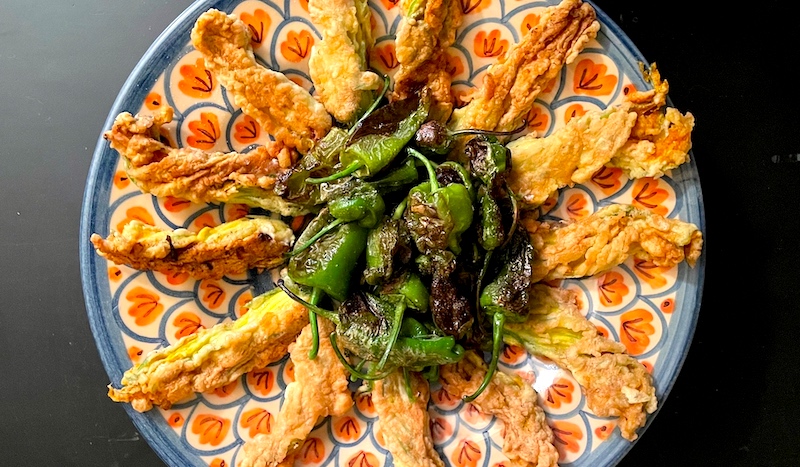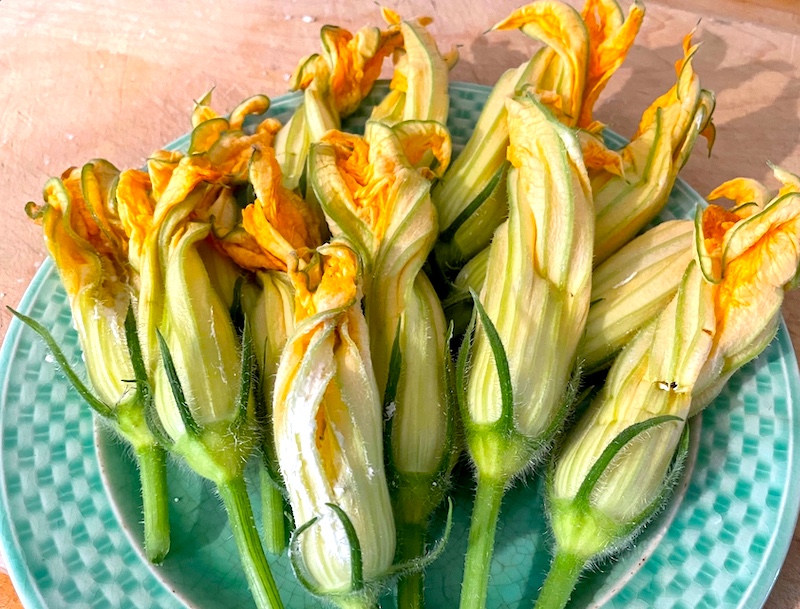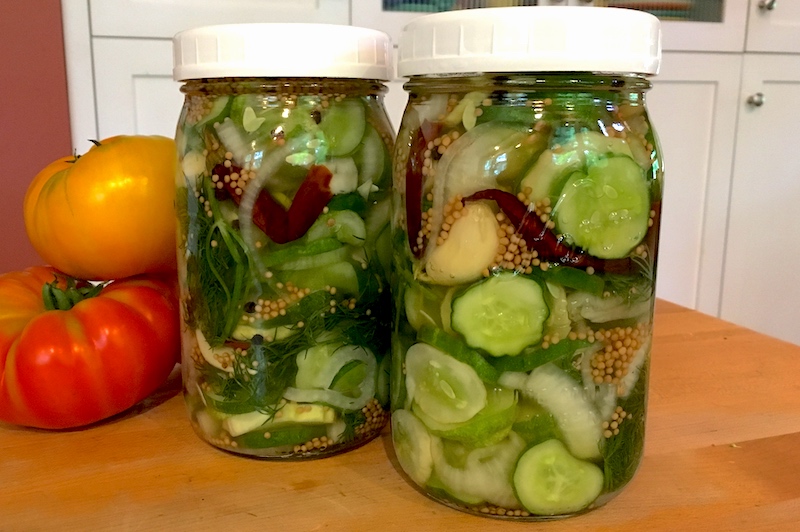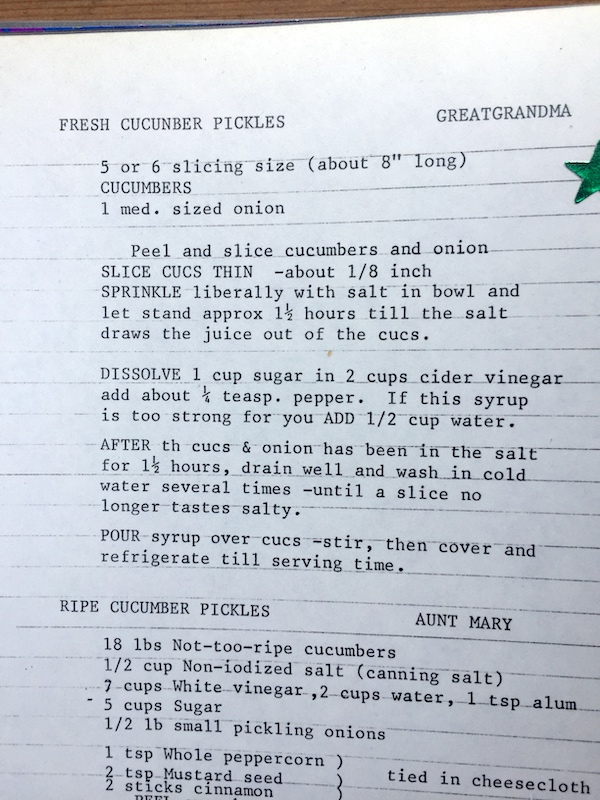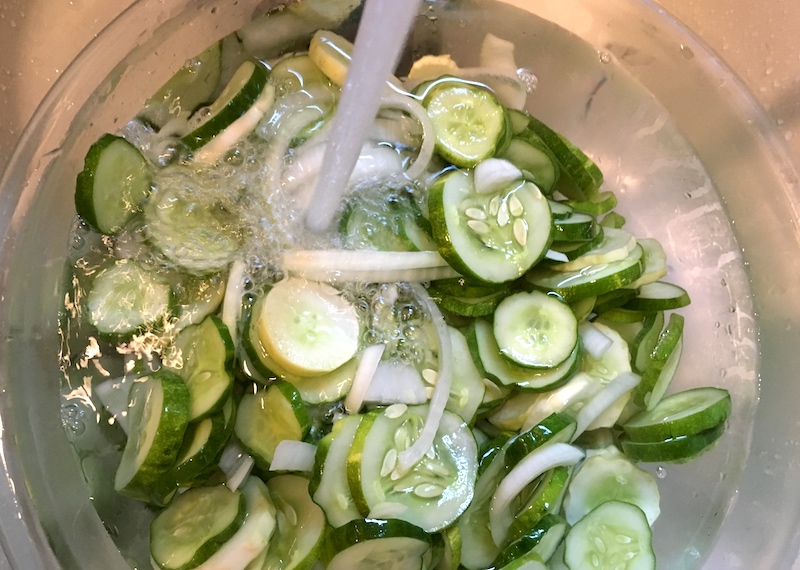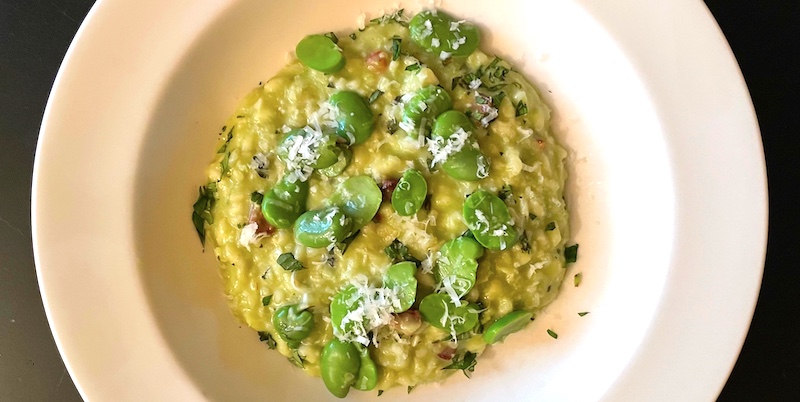
In Season: Creamy Fava Risotto for the Win!
My neighbor Bill has a backyard vegetable garden that rivals some of our small-acreage farmers. He's currently havesting fava beans, snap and shelling peas, lettuces, herbs and radishes, with several beans, all sorts of peppers, Astiana tomatoes, carrots, berries, figs, cucumbers, shiso, basil and squashes in the queue—there are undoubtedly others, too, but who can keep track?
He and his partner in crime, Jen, are both teachers and spend much of the summer pickling, preserving and freezing the bounty from their back yard, pulling out jars and bottles that tide them over throughout the winter months. Fortunately for me, they're generous to a fault and live just two blocks away.
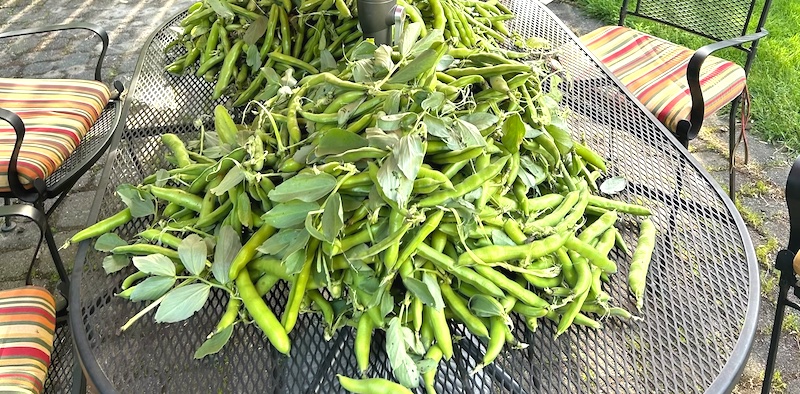 Above is his second harvest of fava beans. He shared some of the first picking, which I added to a salad under a gorgeous filet of grilled salmon, then he asked if I could help out with this second massive haul. My answer was something akin to "Hell yes!" and I rushed over with bag in hand, coming home with at least five pounds of pods.
Above is his second harvest of fava beans. He shared some of the first picking, which I added to a salad under a gorgeous filet of grilled salmon, then he asked if I could help out with this second massive haul. My answer was something akin to "Hell yes!" and I rushed over with bag in hand, coming home with at least five pounds of pods.
Bill had mentioned making risotto with some of the beans from his first picking, so since it was a mild spring evening I decided to follow suit. After doing some research online, I decided to eschew the suggestions combining favas and asparagus and focus instead on the favas themselves, accented by a bit of Dave's smoky bacon and some of the savory Cretin mint from Alice Doyle at Log House Plants in Cottage Grove.
Fresh Fava Bean Risotto
4 lbs. fava bean pods
1/4 lb. bacon, cut in small 1/4" cubes
2 Tbsp. olive oil
1/2 medium onion, finely chopped
4 cloves garlic, finely minced
2 c. arborio or other short-grained Italian rice
1 c. dry white wine
4 c. chicken broth
1 c. Pecorino Romano, finely grated
1 c. Parmigiano Reggiano, finely grated
1/2 c. (1 stick) frozen butter, cut crosswise into quarters
2 Tbsp. mint leaves, finely chopped
Salt to taste
Bring a medium saucepan full of water to a boil and salt the water. While it heats, shuck the fava beans into a mixing bowl and discard the pods. When the water boils add the beans to the pot. When it returns to a boil, cook for three minutes, drain and submerge in ice water. When they cool, drain again and remove outer casings from the largest pods (or about 1/4 of the total). Set the peeled pods aside. Place the remaining unpeeled beans in a food processor or blender and process, adding just enough water to make a smooth purée. Set aside.
Heat the stock in a medium saucepan and keep warm over low heat.
Place the bacon in a large saucepan or risotto pot and fry over medium heat until crispy. When it's almost crisp, add the olive oil and heat for a few seconds, then add the onion and garlic to the pan and sauté until tender. Add the rice and stir to combine.
When the rice begins to get hot and crackle, add the white wine and stir gently until it's absorbed. Then begin adding the hot broth a ladle at a time, stirring gently and adding another ladle of stock as it absorbs. Repeat until the rice is almost done (it will be al dente but not crunchy), stir in the fava purée and allow it to come to a simmer for three minutes. Add the cold butter and a heaping cup of the grated cheeses and stir vigorously to emulsify the butter. Check for salt adding as needed.
I like to serve the risotto in the pan with a ladle, scattering the peeled favas over the top with the mint and grated cheese, though for a "company dinner" you might want to plate it in individual wide bowls garnished with the peeled beans, mint and cheese. (Make sure to serve plenty of grated cheese on the side!) A salad of soft lettuces is ideal to serve with this risotto, especially with my Sweet Red Wine Vinaigrette dressing.
Get Jen's great-grandmother's recipe for Quick Refrigerator Pickles.

